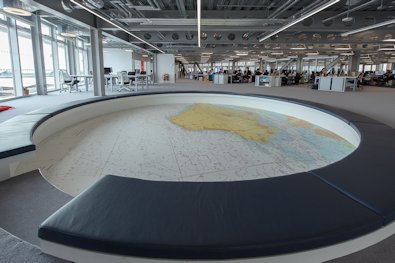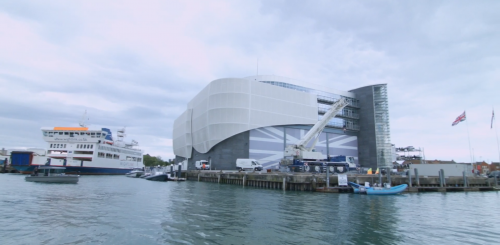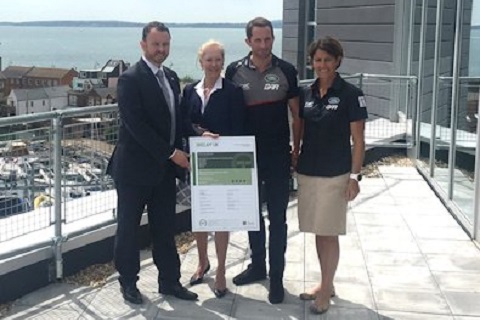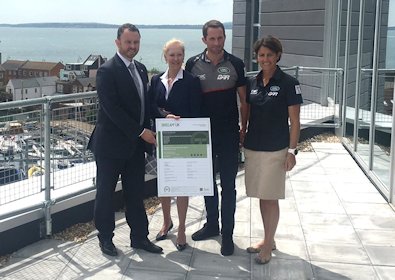A better workplace, lower costs and higher performance
Project Details
- Scheme & Version: New Construction 2011: Other Buildings
- Stage: Final
- Location: Portsmouth, Hampshire UK
- Score & Rating: 70.7% Excellent
- Certificate Number: BREEAM-0062-2456 (Certified as Ben Ainslie Racing & Americas Cup Team Base & HQ)
Project Team
- Client /Developer: Ben Aisling Racing
- Assessor Company: Couth Perry & Wilkes
- Contractor: Allied Developments / TA Colbourne / Overbury
- Project Manager: Highcol Ltd
- Architect: HGP Architects Ltd
- Building Services: Couth Perry & Wilkes LLP
Vision & Ethos
Land Rover BAR is a sports team and a business with long-term plans and long-term ambitions – one of which is to win the America’s Cup, competitive sailing’s biggest prize and the oldest trophy in any international sport #BringTheCupHome. The team believes its influence should extend far beyond the sailing and aim to be the most sustainable sports team in the UK, and therefore raising the standard and best practice for others to follow. With this in mind, when it came to creating a new team headquarters and visitors’ centre, there was only one choice to drive such performance, BREEAM.
Located at The Camber in Portsmouth, the new building has achieved BREEAM Excellent and in doing so has helped them stake the claim of the first professional British sports team to operate from a BREEAM Excellent building. Part funded with the support of a £6.5 million government grant, the new 74,000 square foot waterfront building officially opened in time for a British Challenge for the 35th America’s Cup.
BAR Sustainability Manager Dr Susie Tomson said: “At Land Rover BAR we have built the team base to BREEAM Excellent with the aspiration that this acts as the framework for our operations – when people visit, they can tell the building is different – it is all about design, technology and innovation which delivers sustainability on so many fronts.”
Used in more than 77 countries, BREEAM has issued more than 550,000 certificates on more than 24,000 projects around the world, and over 2.2 million buildings and communities are registered for certification. With such a far reaching global presence it was the natural choice for Land Rover BAR – itself a global brand – to benchmark the sustainability of its new facility.
Matthew Williams Director, HGP Architects commented: “Using modern methods of construction – and with technologies incorporated into the design to seek carbon neutral credentials – Ben Ainslie and his team have sought to commission a team home of cascading layers linked together through a central light well that connects everyone to the heart of the team and the boat.”
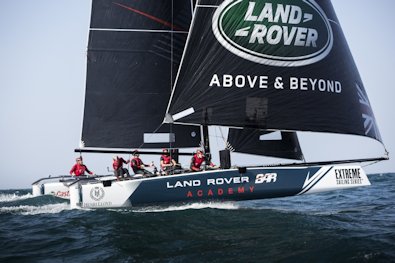
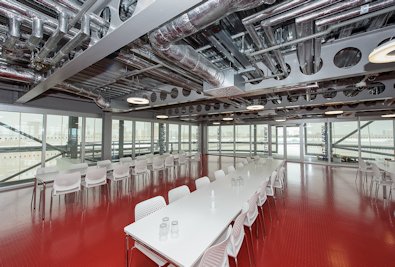
In line with its commitment to becoming the most sustainable sports team in the UK, Land Rover BAR, working alongside its Exclusive Sustainability Partner 11th Hour Racing, has created a headquarters that showcases all that is sustainable. It has demonstrated that sustainability can not only improve working conditions and lower environmental impact but provide significant cost savings. Efficiencies in time, energy and materials as a result of BREEAM and BIM drove a 50% saving in programme delivery which has led to significant financial savings. Although these savings have not been fully quantified, they are likely to reach over a £1 million across the programme.
Designed by HGP Architects and built by Allied Developments, the innovative building saw sustainability embedded from the outset with 98% of all demolition, excavation and construction waste diverted from landfill and 100% of the demolition concrete reused in the foundations as secondary materials.
BIM enabled the design team to undertake life cycle analysis of the design choices whilst providing informed options for in-use performance monitoring. This encouraged circular thinking about procurement of construction materials and products – how they will perform in-use and what options are available at the end of their life in terms of reuse or recycling.
More than 400 solar panels cover 100% of the available roof space, generating 130 Mwh/yr of power whilst natural ventilation is achieved through the central atrium which eliminates the need for a mechanical ventilation system. Natural and low energy (LED) lighting and rainwater harvesting has led to a 25% improvement in water efficiency over existing UK building regulation standards. In addition the building’s fabric wrap provides a heat saving air cushion of approximately 4-5°C and controls the amount of sunlight that enters the building, reducing energy used for cooling and so reduces the carbon emissions.
Whole life thinking has meant that operational efficiency has been incorporated not just into the construction phase but also day-to-day management of the facility. A bespoke building management system monitors 15 different points including energy and water consumption, renewable energy generation and waste.
As well as design, construction and operation, BREEAM allowed the team to think about ecology and how the building could enhance and support its local surroundings. Through the creation of a small garden the site is now home to 69 new species, compared to eight prior to the development of the building. Oysters were saved from a dredge site and relocated to a 9m² artificial reef on the team’s pontoon to help restart a viable population in the Solent. The building also features a roof vegetable and herb garden that supplies the building’s kitchen.
Operational management includes a travel plan with public transport access and provision for cycling to work as part of a wider travel plan for staff and visitors. Even design and material choices mean the building can be deconstructed more easily and more building materials recycled at end of life.
Jeremy Pochman, President of 11th Hour Racing added: “This milestone of BREEAM Excellent standard represents an unprecedented success story, and a legacy that will inspire the next generation of sailors, engineers, architects and fans across the world of sport.”
Sustainability Snapshot
- Brownfield site regeneration
- 97% demolition materials recycled
- 21 local community consultation events
- BIM 3D modelling helped reduce costs
- Cycle racks and sustainable transport policy
- 9 native species reintroduced
- 9 m2 artificial reef created
- Bee hotels, bird boxes and green walls
- 40+ energy usage meters
- 1200 litre rainwater harvesting tank
- Natural daylight maximised
- A / A+ rating for majority of structural materials
